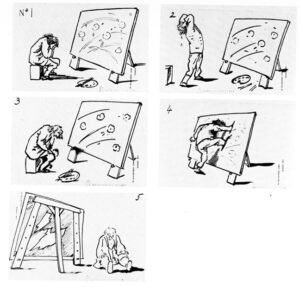Recently I was in the Ashmoleon Museum in Oxford for an exhibition of Pre-Raphaelite drawing but upstairs in their permanent collection I found another Pre-Raphaelite painting which I knew well but which it, it turned out, still had the power to shock, and more than that, to make me question everything I had thought I was trying to do on my journey of learning to paint.
I must elaborate. For many years I have been “learning to paint”, I think even artists far more advanced than I would happily concede that this process lasts a lifetime. But for realist artists, particularly for those still perhaps nearer the start of the journey than the finishing line, “learning” consists largely of aquiring technical skills, hopefully in order to better express oneself, to say what one wants to say more beautifully, but at the very least to share enjoyment of the technical side of the craft of painting.
However this picture turned these thoughts upside down and inside out. Here it is.
Now, I adore Burne-Jones, almost all his works, even the slightest sketches, such as the caricature at the top of this post, move me in ways I can’t put into words, but if you love art you will probably have a favourite artist who does the same to you and you will understand. My problem, if it is a problem, is that this picture by the technical standards I am trying to attain really isnt that great. Nothing is defined with great precision, the heads and hands are simplified without the interplay of cool and warm tones etc we are always told are so important, the draperies dont really give an impression of the anatomy beneath, the landscape is generic without any aeriel perspective and so on and so on. A critical proponent of the new school of academic classical realism could rip this picture to shreds. And yet when I stand before it I feel the world is a better place for its existence and I am a better person for seeing it.
Does this mean therefore that I am wasting my time worrying about all these technical matters such as turning form and losing edges and dropping the chroma in the half tones? I can’t beleive that is the case but I do intend to try and keep in the forefront of my mind the fact that these are only means to an end. For me, and obviously this is entirely a personal feeling, I want to put beauty and romance to the top of the agenda and always ask myself how these technical accomplishments ( in so far as I possess them) can be put to their service. I think I must also be aware that as Ruskin says somewhere that if it comes to a choice, it is better to sacrifice some refinement of execution than any beauty of colour.
In the second part of this post I shall muse a little more on Ruskin’s comments about the differences between “realistic” and “mythic” painting to borrow his terms. But I will finish this section with a quote from my master Burne-Jones that I think encapsulates what I am wobbling so uncertainly around. “Only this is true” he wrote to a friend “beauty is very beautiful, and softens and rouses and comforts and lifts up, and never fails.”



